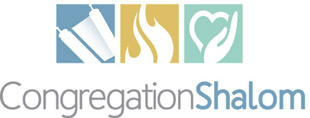Meaningful Holiday of Passover
April 2023 В Keeping Connected
Dear Friends,
Chag Sameach! Signs of spring are happening all around us and with it I hope you are feeling the anticipation for the joyous and meaningful holiday of Passover. The Seder is an experience rich in traditions and meanings. The whole ritual is designed to teach and communicate core Jewish beliefs and values to children, as well as to reinforce these themes for adults. As we eat the parsley or green vegetable we celebrate the renewal of life and the return of spring. As we eat the charosets (mixture of sweet fruits and nuts) we reflect on the burden of servitude and bondage and as we mix the charosets with the maror (bitter herbs) we acknowledge that life’s experience can be both bitter and sweet. As we eat the matzah we recall the experience of leaving a known place for the unknown; a leave-taking that was fraught with fear and haste and anticipation.
This past week during Hebrew school, I showed my students two short videos interpreting the texts from the Book of Exodus that describe the Ten plagues. If you are interested in watching them you can click these two links: https://www.bimbam.com/vaeira/and https://www.bimbam.com/bo/. Despite the late hour of the day, these teens seemed focused on the message of these interpretations. I then asked the students to break up into groups and to make their own lists of contemporary plagues that impacted them as young people today. The lists were long, inciteful and poignant. They included: Covid, racism, stereotyping, politics, prejudice against people’s differences, hate, the crisis of mental health concerns, social media and more. Often on a late Wednesday afternoon, after students have had a long day at school, it can be hard to concentrate and to engage. I was struck and deeply moved by how focused these students were on this particular conversation; how reflective they were not only about how they were impacted by these modern “plagues”, but by how they themselves could be contributing to some of these issues. It was a powerful and at times profound conversation. I encourage you, when you get to the Ten Plagues part of the Seder, consider having a similar conversation. It would an opportunity for spiritual and personal growth.
And then there is the mystical number four. We hear the voices of the four children: the wise one, the rebellious one, the simple one and the one who does not know enough to ask. We drink four cups of wine representing God’s four promises of freedom and redemption and we recite the four questions: actually one question and four statements. “Why is this night different from all other nights?” The fourth statement in the Haggadah is “On all other nights we sit straight or reclining, but at the seder we eat reclining”. The rabbis of the Mishnah based the seder experience on the banquets of rich Romans and being able to recline on pillows and eat represented the status of freedom: civil freedom and freedom from concerns about financial restraints.
 At our seders, we may not actually be enacting this ritual of lying on pillows and eating in a way that physically captures our experience of freedom. Rabbi Martha Hausman suggests a new Passover ritual in which people coming to the seder could bring an item that represents freedom to him or her, at this point in their lives. At some point during the seder, each person could hold up their item and explain why it represents freedom. In this way, can make real for us the vision of this festival – Freedom.
L’shalom,
Rabbi Shoshana M. Perry
